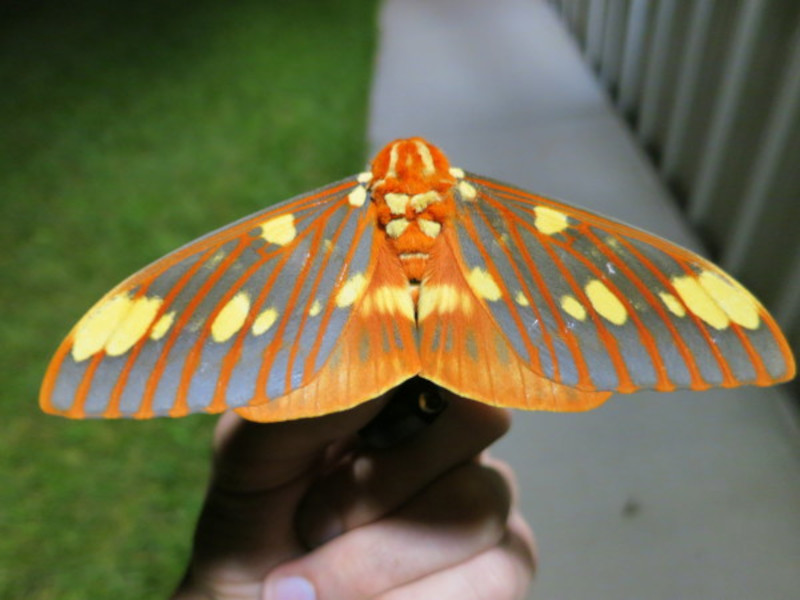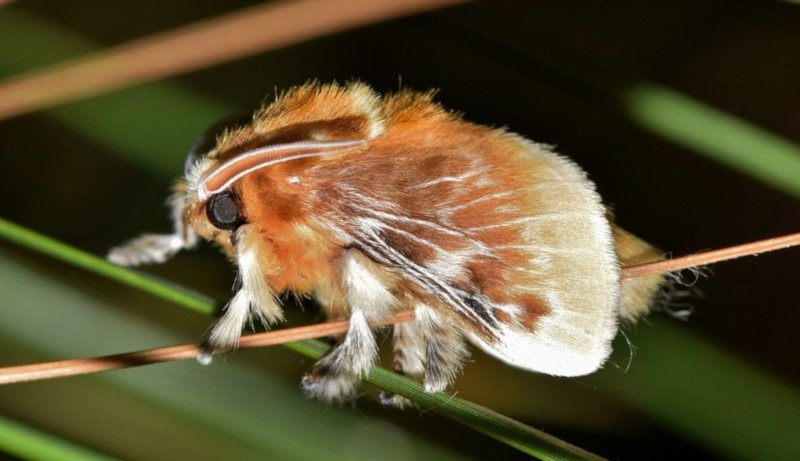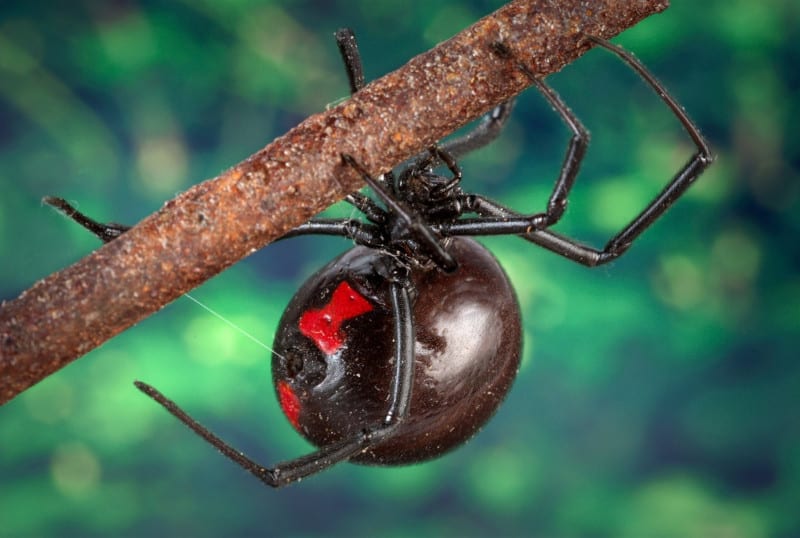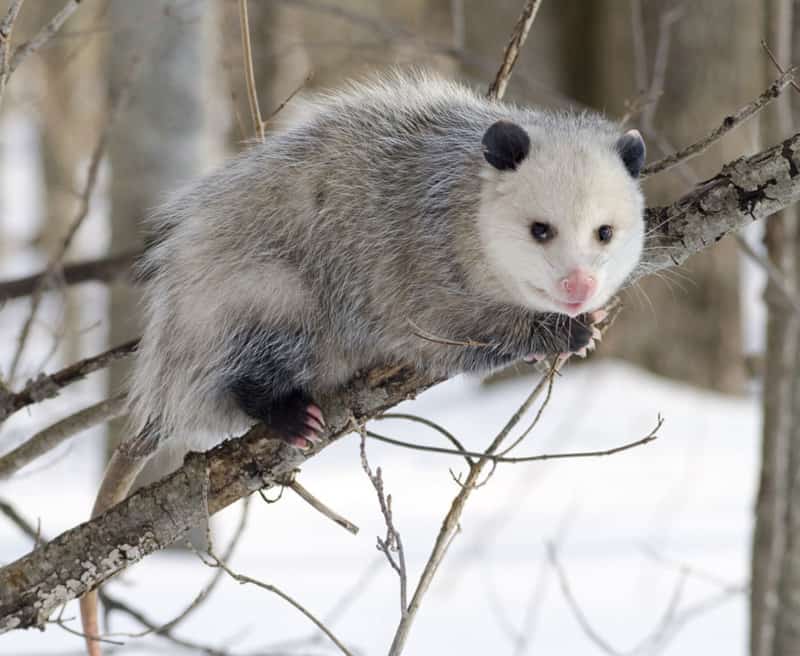Southern Flannel Moth Facts
- This gorgeous variety of Lepidoptera most commonly goes by the name of the Southern Flannel Moth. It’s actually better known for its immature stage, however. This stage of its life cycle, in fact, has multiple names that it goes by.
- These multiple terms include the asp, Italian asp, puss caterpillar, opossum bug, woolly slug, puss moth, tree asp, and asp caterpillar. Its scientific name, however, remains quite hard to pronounce. That’s because it’s Megalopyge opercularis.
- While it remains better known for its larval form, the amazing invertebrate nevertheless ranks as an extremely beautiful insect. Sadly, though, it’s not widely known. This unfortunately leads to a lack of understanding of its place in Nature.
- While its beauty makes one want to pet it, doing so provides a rather unpleasant experience. That’s due to an evolutionary protective measure. The lovely fur conceals numerous spines containing a toxin that produces very unpleasant effects.
- For the moment, the delicate Southern Flannel Moth appears to be maintaining a sizeable population. This also seems to be remaining relatively stable across its range. The IUCN, therefore, currently has no listing for it on the organizations’ Red List.
- The magnificent arthropod nevertheless must be considered to facing at least some risks to its continued existence. Habitat loss understandably ranks as one of these. Its greatest threat, though, undoubtedly comes from climate change.
Related Articles




Southern Flannel Moth Physical Description
The stunning Southern Flannel Moth is another of those creatures that prove size remains irrelevant to beauty. That’s due to the simple fact that it’s a comparatively small Lepidoptera. It also displays a slight degree of the physiological trait of sexual dimorphism.
In its particular case, this manifests itself in terms of sheer physical size. More specifically, the females attain a somewhat larger size than the males of the species. Males typically attain a wingspan of 1 in (2.4 cm). Females meanwhile, reach a span of up to 1.5 in (3.6 cm).
Otherwise, both genders present roughly the same overall appearance. The fur of the insect varies significantly in color among individuals, however. This further occurs regardless of gender. Yellow predominates, though, with shades of brown and black mixed in.
The overall appearance of the Southern Flannel Moth can perhaps best be described as fuzzy. That’s due in part to the fact that even the short legs typically display large quantities of small hairs. The feet even have a covering of fur, usually a dark black in color.
- Kingdom: Animalia
- Phylum: Arthropoda
- Class: Insecta
- Order: Lepidoptera
- Family: Megalopygidae
- Genus: Megalopyge
- Species: M. opercularis
Southern Flannel Moth Distribution, Habitat, and Ecology
The gorgeous yet dangerous Southern Flannel Moth inhabits a highly specific portion of the country of the United States, in North America. Specifically, the marvel inhabits a range that extends from New Jersey to Florida, and then west to Arkansas and Texas.
The creature also appears across a narrow but extend portion of the continent elsewhere. That’s because it also appears in parts of Mexico and Central America. The greatest concentration of the insect, however, occurs in western and central parts of Texas.
For its habitat, the lovely Lepidoptera seems to have evolved very specific preferences. This wonder of evolution, in fact, primarily prefers various trees, such as elms, wild plum, and oaks. Yet it also frequently occurs on garden plants such as ivy and rose bushes.
This moth usually has two broods per year, under most conditions and in most parts of its range. Occasionally, though, it has three, depending on its exact location and local climate. Mating typically happens on the first night of its emergence from the cocoon.
Following that, the female commonly lays her numerous eggs on various available twigs and leaves. After emerging, the larvae feed quite voraciously. These further do so on a wide variety of plants, but most commonly on citrus, oak, and elms trees.
The spines of the Southern Flannel Moth contain a powerful toxin used for self-defense. Upon exposure to human skin, a reaction is almost instantaneous. Symptoms include burning, swelling, headache, nausea, rashes, blisters, and sometimes chest pain.
Species Sharing Its Range



Check out our other articles on 3 Astonishing African Lizards, Crocodilefish, Blood Falls, Finless Porpoise, Death Apple Tree, Purple Frog, Jackson’s Chameleon, Hyacinth Macaw











I was trimming a large Wax Myrtle tree in our yard and got stung by the Puss Caterpillar.
I was lucky to not have gotten stung multiple times, as upon closer inspection the tree was loaded with them. My afternoon ended with me in the ER trying to explain to the Drs. there what had happened to me. They had never heard of the Puss Caterpillar and had to go online for info on it. The pain went from my hand (where the sting was) all the way to my armpit in ~20 minutes and made me nauseous as well. Avoid these at all costs is my friendly advice.
Hello Tommy,
We are glad you are okay, of course. And you are correct, not everyone is aware of this species. One must always respect Nature!
Sincerely,
OBP